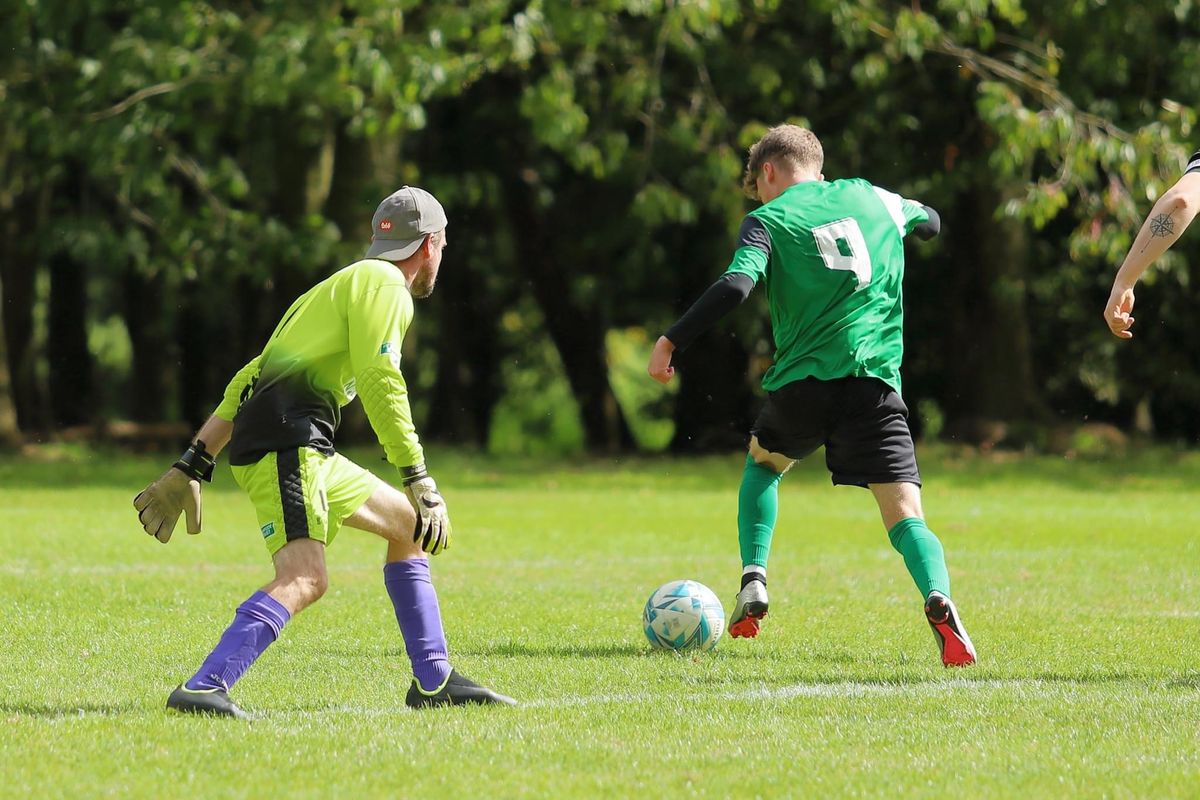Generation Game - the future of grassroots football in Norfolk ⚽
How faith in youth is helping football to thrive

Good morning from The Seeker!
One of the best jobs I have ever had in management is coaching my son's football team. And while many of you will be settling down for your latest Saturday edition of The Seeker, I'll be getting ready for kick-off later this morning for our home match at The Nest (it's Hellesdon Lions U10s v Hockering Wizards btw) 🦁.
Community involvement is something I'm keen to promote as editor so I've been looking forward to today's long read by Gary Gowers about the changing fortunes and formats of football across the generations - and why Norfolk's vibrant youth scene may point to a different, yet equally healthy future for the game.
Thank you for supporting The Seeker!
Shaun

Football Focus
This weekend sees something quite remarkable taking place across Norfolk – around 9,000 young boys and girls aged from 6 to 17 will be playing football.
Family and Friends will be there standing behind the Respect Lines cheering them on – and hopefully, but not always, keeping their emotions in check.
It’s something so commonplace that we may be in danger of failing to grasp its significance for the future of football.
But for many it won’t be the traditional version of the game they are playing, but smaller formats such as 5, 7 and 9-a-side. These younger ones will be competing in league friendlies in the Norfolk Combined Youth League, yet where scores or league positions aren’t published.
Players under 10 are also not allowed to header the ball as part of an FA trial, which has proved popular overall.
They are changes from the top of the FA designed to foster skills and develop a life-long love of the game, focused on fun, friends and fitness – a far cry from what you might hear on most terraces.
And it’s working.
Youth football both for boys, and increasingly girls, is on the rise in Norfolk. As is women’s football, buoyed no doubt by the Success of the Lionesses and a greater focus on developing young players.

A Sport England Active Lives survey published in December 2022 revealed since 2017 an additional 100,000 girls are now playing football. The scene in Norfolk reflects this national trend. Meanwhile, in a further boost Norwich City Women are now incorporated into the main club and using The Nest and Carrow Road for home games.
This week newly signed Norwich City Women winger Rachel Lawrence also spoke of the support she received to help her launch a career in the game while studying psychology at UEA.
And yet according to the FA the drop out rate for girls is high - while 72% of girls play football in primary school, this falls to 44% in secondary school.
A greater challenge may be in finding enough coaches and referees to meet this rising demand.
But while the shoots of grassroots football are strong for both boys and girls in Norfolk – for adult men the picture is less rosy, particularly on Sunday mornings, where a once-thriving football community now struggles to attract the numbers it did.
So does youth football offer the solution to stem that decline in the men’s game?
Youthful optimism

Chris Brown, Horsford FC chairman, and vice-chairman of the Norfolk Combined Youth League, says a focus on youth was starting to pay dividends for the club and the league.
Since becoming chairman, Chris, whose work developing the grassroots game saw him win a Norfolk FA Volunteer of the Year Award in 2021, has seen the number of Horsford teams increase from nine in 2017 to 44 with 440 signed players.
“The players are coming through,” he said.

Each year the club hosts a summer 5-a-side tournament with 120 teams competing for trophies and crowds of nearly 2000 people. Similar events at Old Catton, Wroxham and Watton are among several others countywide proving equally as popular typically with a friendly carnival like atmosphere, stalls, bouncy castles, and lots of gazebos dotted around the place.
For the Norfolk Combined Youth League participation is at record levels with 666 teams of 9090 players from 97 clubs.
“Progressing through the different formats has definitely helped,” Chris said. “We are seeing more teams now. You still get dropouts between 14 to 16 when teenagers get to high school and then later when social life, work, college and university takes over. But for many years there was a big drop off - now we are seeing more teams come through.”
So where could these young players end up if they continue playing the game?
Weekend Shift
Norfolk’s biggest Saturday league is the Anglian Combination – consisting of 95 teams split between seven divisions – which has been successful in maintaining numbers, helped by the pathway it provides through to the next level of the pyramid for teams that succeed in the Premier Division.
There are currently four other Saturday leagues – the Central & South Norfolk League, the Norfolk Christian League, the North East Norfolk League and the North West Norfolk Saturday League – all of which are thriving. In total, in a county of around 916,000 people, there are 187 teams that play football on a Saturday afternoon.
The story for Sunday morning is, however, very different. Numbers continue to dwindle.
Sunday shortfall

In Norfolk there is now just one Sunday league, the Norfolk & Sunday District League, which has four divisions.
Matt Colley a newly qualified referee and one-time player, notes that back in 1999 when he played for Newsman Celtic, the league had nine divisions, plus there were other local leagues:
“I think it's been declining steadily since the mid-noughties,” Matt said. “There was another Sunday league called the Crusader League and there was always a waiting list for the main league. There was also a Yarmouth Sunday League, South Norfolk Sunday League, Thetford and District Sunday League, West Norfolk Sunday League. As far as I'm aware none of these exist any longer.”
While the current Norfolk & Sunday District League is well-run, well organised and buoyant, the fact remains it is now the lone survivor in a field that was once a staple for footballers of all ages, shapes and sizes who saw Sunday mornings as a slightly less serious alternative to Saturday afternoon football.
Veterans rally

The flip side to the decline in numbers in men’s Sunday morning teams is the growth in the veterans’ game – for those aged over-35 – which, ironically, tends to be played on Sunday afternoons. While formed as recently as 2010, the Norfolk Veterans League now boasts six divisions and is positively thriving. Several ex-Norwich City players, including Darren Huckerby, play in the league’s ‘Premier Division’ and so while it may no longer be played at breakneck speed, there is no shortage of skill.
Darren, who plays for Cringleford Vets, is a huge advocate of the over-35s’ game.
“I obviously loved the football but the social side was the main draw,” he said. “I’ve made friends for life, and, along the way, have played alongside fellow ex-pros, like Scott Howey, Adam Drury, Matt Gill , Grant Holt and Wes (Hoolahan)”.
While there is clearly not the same appetite for Sunday morning football, for those of any age who want to still play but who can commit only a few hours a week, there is now the option of playing small-sided games on 3G surfaces, with several five-a-side and six-a-side leagues on offer at various venues across the city and county, including the UEA.
Chris said while the emphasis on the Respect Code at a younger level had helped foster a change in culture on the sidelines, Horsford's introduction of a wider variety of footballing formats such as ‘Wildcats’ and the non-competitive ‘Just Play’, where players simply turn up for a game, had all helped increase participation. There was also a Walking Football team too, which meant that all ages and all levels were being catered for.
“We have just got a first team in men’s football in the Central and South Norfolk League that were built up from the 16 to 18 year olds," he added. "And we now have three women’s teams.
“It’s growing every year."


